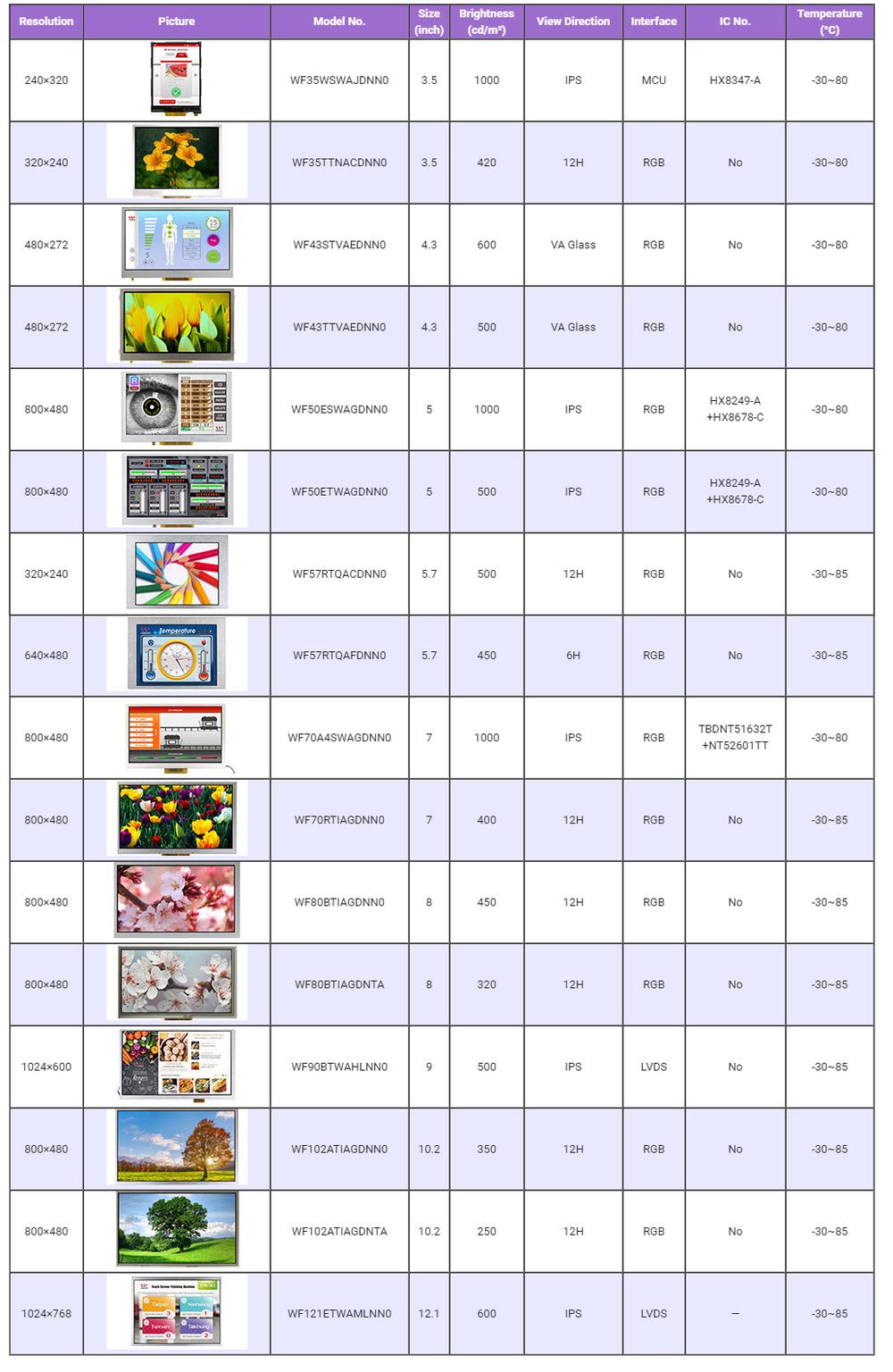Quando si seleziona un display, è importante considerare le temperature alle quali funzionerà e, inoltre, tenere conto delle condizioni termiche straordinarie che possono verificarsi nell’ambiente dell’applicazione.
I display TFT standard odierni presentano generalmente un intervallo efficace di temperatura compreso tra -20 e + 70°C mentre i display TFT con una gamma di temperatura di funzionamento più stretta, ad es. da 0... a + 70°C o da 0 ... + 50°C sono piuttosto rari.
Fortunatamente, esistono anche tipi di LCD TFT con una gamma di temperatura molto ampia, compresa tra -30 e +80 (85) °C.
Quando è consigliabile utilizzare un display con una gamma di temperature di funzionamento extra ampia?
Se l’applicazione funziona all’aperto, siamo naturalmente interessati anche nella gamma di temperatura più bassa. Meno 20°C è una temperatura che si verifica quasi ogni inverno in Europa. Si tratta solo di pochi giorni, ma è necessario considerare tale temperatura. Le temperature intorno ai -30 °C si verificano anche più raramente, ma ci sono stati anni in cui temperature così basse si sono manifestate. Se disponi di un dispositivo che deve essere in grado di funzionare a temperature così basse, il display con una gamma di temperatura compresa tra -30 e +80 (85) °C è una scelta ovvia.
Tuttavia, vi sono anche casi in cui una lettura ridotta o addirittura minima del display che opera a una temperatura inferiore al minimo consentito non è un problema. Al contrario, lo è il fatto che in queste circostanze il display potrebbe danneggiarsi in maniera irreversibile. Il punto è che la gamma di temperatura di immagazzinamento è spesso uguale all’intervallo efficace di temperatura, pertanto il produttore non consente nemmeno di “conservare” o di esporre il display a temperature più basse, anche da spento. Questo sottolinea l’importanza di considerare le temperature alle quali il tuo apparecchio può funzionare.
Che effetto ha l’alta temperatura?
Ecco cosa può succedere: gli LCD a temperature molto alte di solito perdono il contrasto, ma dipende molto dal display/dalla tecnologia specifici. Le alte temperature caricano anche richieste più elevate sui materiali dai quali è costituito il pannello LCD.
Ad esempio, temperature di circa 50-70°C sono comuni per gli abitacoli dei veicoli chiusi, non ventilati, parcheggiati sotto la luce solare diretta in estate. Allo stesso modo, i display dietro la copertura di vetro esterna, che sono esposti al sole anche per un breve periodo, sono soggetti a notevoli shock termici.
I display con una gamma di temperatura estesa sono una scelta più sicura. Naturalmente, il display stesso e in particolare la retroilluminazione sono una fonte di calore. Pertanto, non è solo la temperatura ambiente che deve essere presa in considerazione, ma anche la temperatura di lavoro risultante del display.
In che modo i display della gamma di temperatura estesa differiscono da quelli standard?
I dettagli precisi fanno parte del know-how di ogni produttore di display, ma possiamo dire che la differenza sta nella tecnologia e anche nel fluido dei cristalli liquidi. Generalmente, lavorare con prodotti/sostanze ad alte temperature al limite superiore della gamma consentita ha un impatto negativo sulla sua durata. Lo stesso vale per i display: quindi se sai che il display potrebbe essere esposto a temperature attorno al valore massimo consentito per un determinato tipo, potresti dover utilizzare un display dalla temperatura massima più elevata.
Attualmente Winstar offre 16 tipi di display TFT da 3,5” a 12,1” per temperature comprese tra -30 e + 80 (85) °C, comprese le versioni con opzione per un’alta luminosità (600-1000cd/m2) e altre nuove in arrivo. Un grande vantaggio di questi display è che presentano gamme di temperature di immagazzinamento comprese tra -40 e +80 (90) °C.
Consulta la seguente tabella di selezione rapida per una breve panoramica.

Se sei interessato ai display WINSTAR con gamma di temperature di funzionamento più ampie, ti preghiamo di inviarci la tua richiesta all’indirizzo info.it@soselectronic.com e provvederemo tempestivamente a rivedere il prezzo e la disponibilità.
Ti piacciono i nostri articoli? Non perderne nemmeno uno! Non devi preoccuparti di nulla, organizzeremo la consegna per te.



















